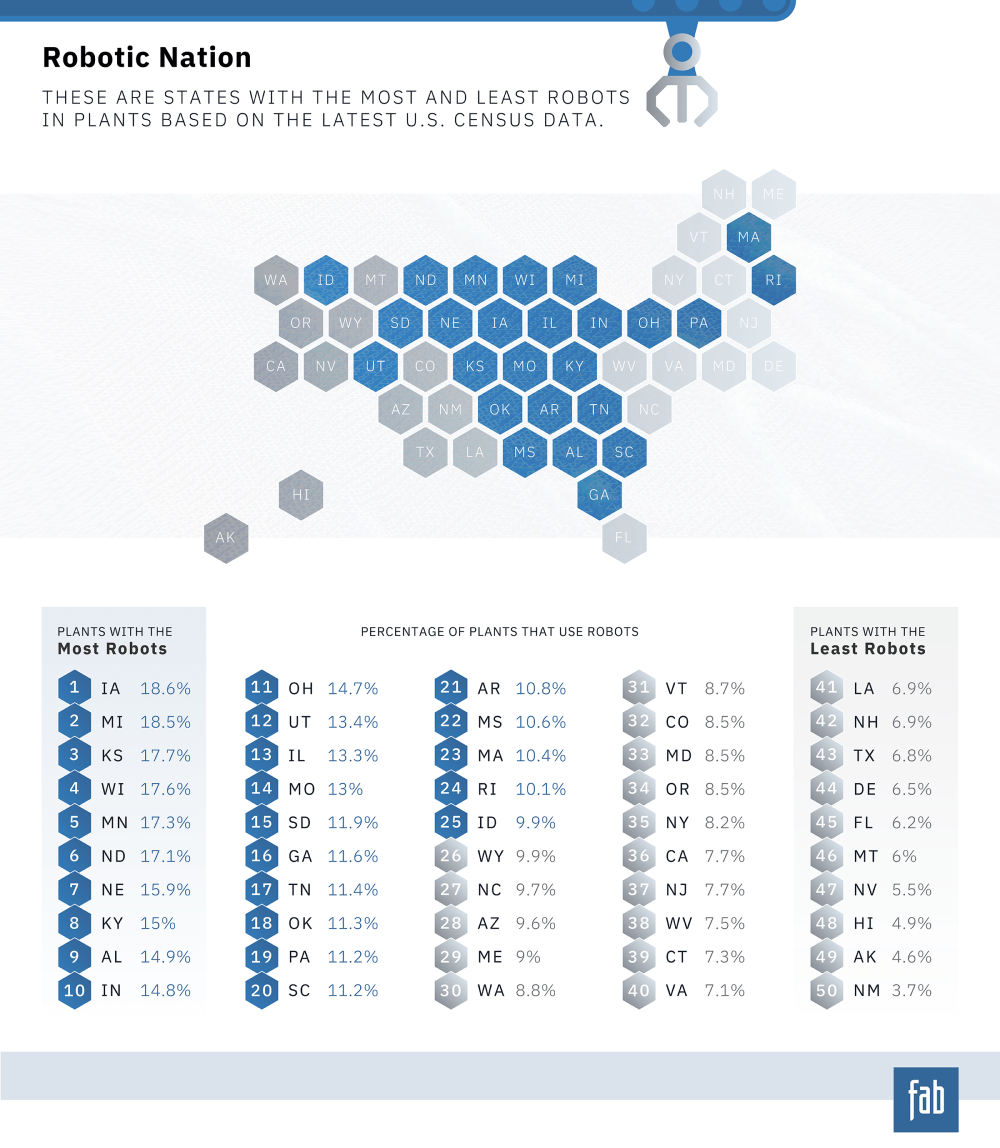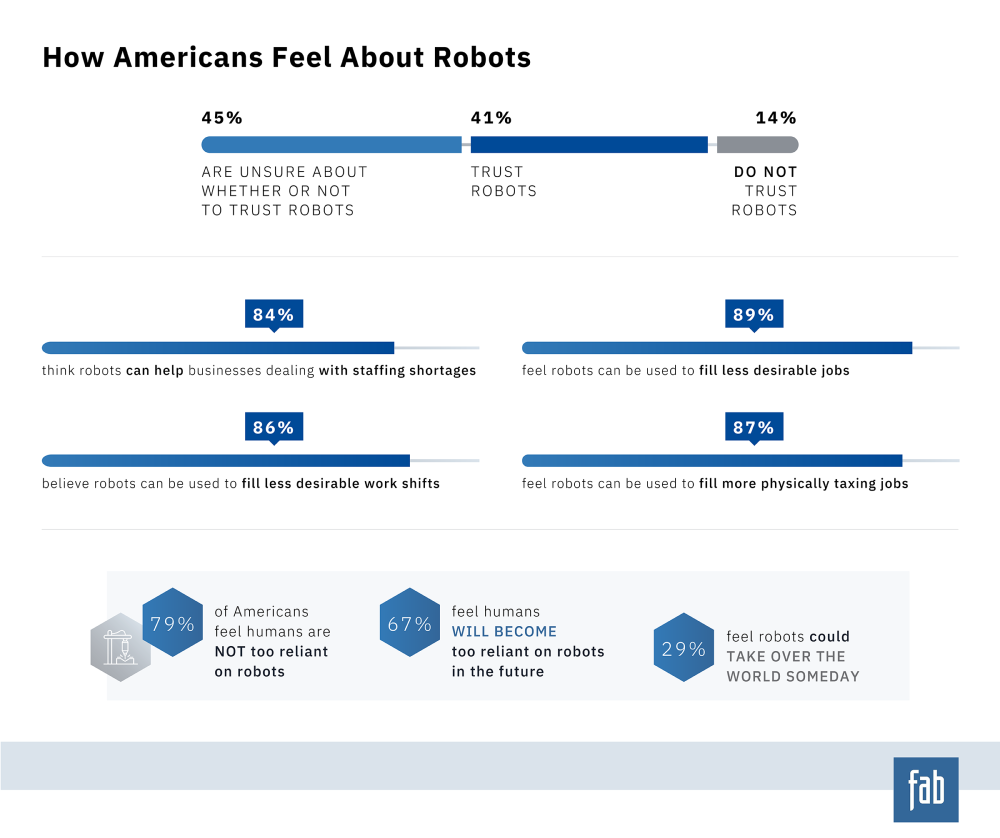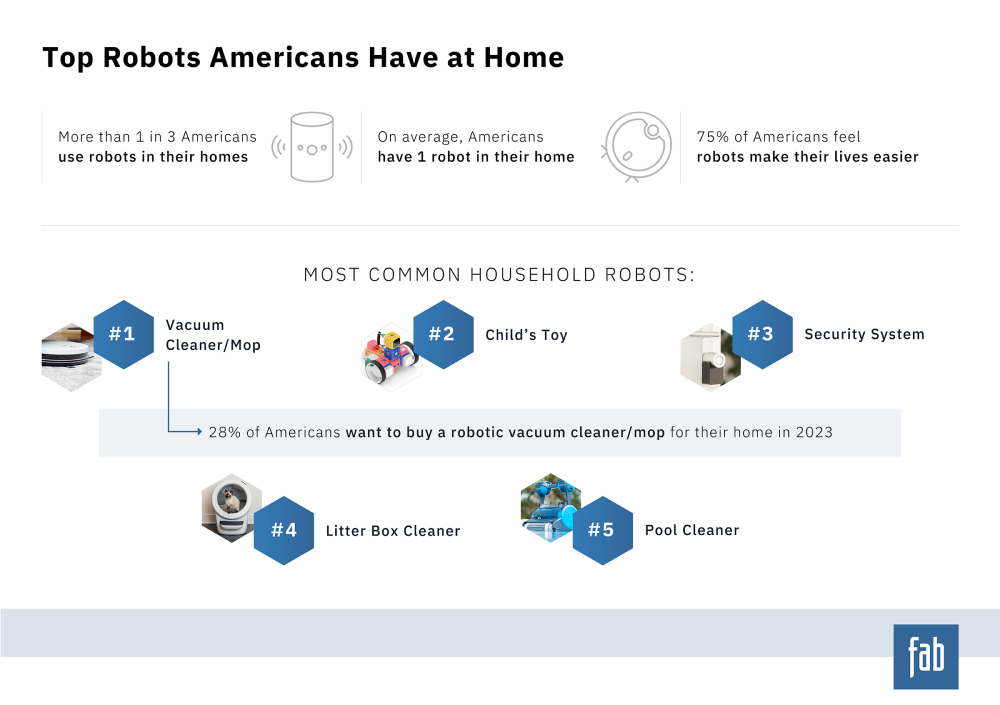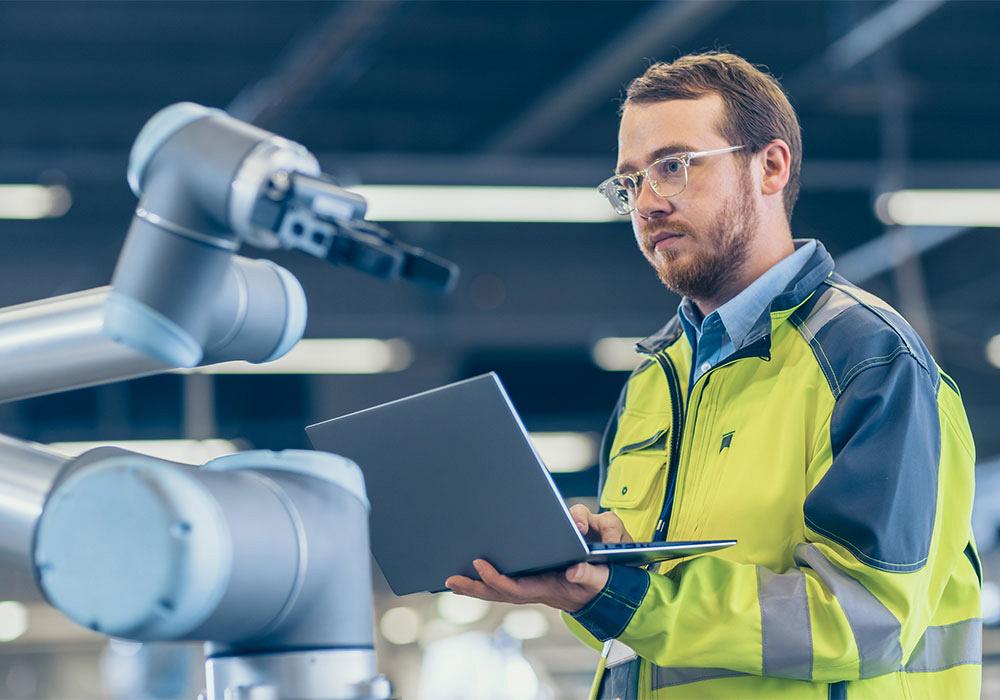- FMA
- The Fabricator
- FABTECH
- Canadian Metalworking
Categories
- Additive Manufacturing
- Aluminum Welding
- Arc Welding
- Assembly and Joining
- Automation and Robotics
- Bending and Forming
- Consumables
- Cutting and Weld Prep
- Electric Vehicles
- En Español
- Finishing
- Hydroforming
- Laser Cutting
- Laser Welding
- Machining
- Manufacturing Software
- Materials Handling
- Metals/Materials
- Oxyfuel Cutting
- Plasma Cutting
- Power Tools
- Punching and Other Holemaking
- Roll Forming
- Safety
- Sawing
- Shearing
- Shop Management
- Testing and Measuring
- Tube and Pipe Fabrication
- Tube and Pipe Production
- Waterjet Cutting
Industry Directory
Webcasts
Podcasts
FAB 40
Advertise
Subscribe
Account Login
Search
Robotic nation: 84% of Americans think robot workers can help with staffing shortages
Can robot workers help with workplace staffing shortages?
- Updated January 10, 2023
- January 10, 2023
- Article
- Automation and Robotics
Robots are becoming a daily part of people’s lives in America. Some have robotic vacuums that automatically clean their carpet. Others work side-by-side with robotics in plants and factories. For some businesses, robot workers have helped fill staffing shortages and keep production moving. As Americans rely more on robots what does this mean for the future?
Our new survey of more than 1,100 people gets to the roots of how Americans feel about these ever-evolving machines. While many see the benefits, others remain unsure about how robots will impact their lives, especially in workplaces.
States with the Most and Least Robots in Plants

Robots are already a reality in many manufacturing plants. According to data released in 2022 from the U.S. Census Bureau, Iowa currently has the plants with the most robots in the nation. Nearly 1 in 5 (18.6%) plants in the state have them.
Michigan, a state well known for its automotive manufacturing, ranked second followed by Kansas (3rd), Wisconsin (4th), and Minnesota (5th).
As for states with the least robots: New Mexico topped the list followed by Alaska, Hawaii, Nevada, and Montana. It’s important to note these states may not have as many plants to begin with as the data did not note the total number of plants in each state.
Robots in the Workplace

The majority of Americans (88%) are not worried about losing their job to a robot. However, 2 in 3 are worried that robots will make others lose their jobs. Our survey found the workers most worried about being replaced by robots are those working in tech/IT, manufacturing, and retail industries.
More than 1 in 10 (12%) who took our survey have worked or previously worked in the manufacturing industry. Among them, nearly 1 in 5 (18%) are worried about robots taking their jobs. Census data shows more than 1 in 4 (26%) manufacturing workers have already worked with robots on the job.
The manufacturing fields with the most robots are transportation equipment, plastics and rubber products, electrical equipment, appliance and component, primary metal, and machinery.
America's Perception of Robots

Most Americans are unclear about what to make of robots. Nearly half (45%) of those surveyed said they were unsure about whether or not to trust robots. More than 2 in 5 (41%) trust robots and nearly 1 in 6 (14%) do not trust them at all.
However, despite America’s uncertainty, more than 4 in 5 (84%) acknowledged that robots can be helpful by filling staffing shortages, a problem many industries are facing right now. The majority also believe robots can make work safer for humans by filling less desirable jobs and work shifts (ie. holidays/overnights), as well as physically taxing jobs.
Right now, 79% of Americans feel humans are not too reliant on robots, but 67% feel humans will become too reliant on robots in the future. Nearly 1 in 3 (29%) Americans admitted they think robots could take over the world someday!
Robots in the Home

Despite these concerns, more than 1 in 3 (36%) use robots in their homes. On average, Americans have about one robot per home, and 3 in 4 (75%) admit robots make their lives easier.
The top home robots are vacuum cleaners/mops, toys for kids, security systems, litter box cleaners, and pool cleaners. Americans are planning to add even more robotic cleaning devices into their homes. Nearly 1 in 3 (28%) want to buy a robotic vacuum cleaner/mop for their home in 2023.
Robots are no longer just part of science fiction movies, but our everyday lives. They’re becoming more and more commonplace in homes, workplaces, and other spaces. What was once imaginary has now become reality and is changing the world.
Methodology: In November 2022, we surveyed 1,104 people to get their feedback about robots. 48% were male, 48% female, 2% were non-binary/non-conforming, 1% transgender, and 1% preferred not to respond. Respondents ranged in age between 18 to 84 with an average age of 39. Of those surveyed, 12% work or previously worked in the manufacturing industry, 12% work in tech/It, 8% in health, 7% in education, and 7% in retail. Others worked in finance, business, and communication industries, or were unemployed or in school.
Fair Use: For media inquiries, please contact media@digitalthirdcoast.net. When using this data and research, please attribute by linking to this study and citing https://www.thefabricator.com/
Sources: Data surrounding robots in plants is from the U.S Census Bureau’s Annual Survey of Manufactures. The data was published in July 2022 but was collected in 2018 and 2019.
subscribe now

The Fabricator is North America's leading magazine for the metal forming and fabricating industry. The magazine delivers the news, technical articles, and case histories that enable fabricators to do their jobs more efficiently. The Fabricator has served the industry since 1970.
start your free subscription- Stay connected from anywhere

Easily access valuable industry resources now with full access to the digital edition of The Fabricator.

Easily access valuable industry resources now with full access to the digital edition of The Welder.

Easily access valuable industry resources now with full access to the digital edition of The Tube and Pipe Journal.
- Podcasting
- Podcast:
- The Fabricator Podcast
- Published:
- 04/16/2024
- Running Time:
- 63:29
In this episode of The Fabricator Podcast, Caleb Chamberlain, co-founder and CEO of OSH Cut, discusses his company’s...
- Trending Articles
Steel industry reacts to Nucor’s new weekly published HRC price

How to set a press brake backgauge manually

Capturing, recording equipment inspection data for FMEA

Are two heads better than one in fiber laser cutting?

Hypertherm Associates implements Rapyuta Robotics AMRs in warehouse

- Industry Events
16th Annual Safety Conference
- April 30 - May 1, 2024
- Elgin,
Pipe and Tube Conference
- May 21 - 22, 2024
- Omaha, NE
World-Class Roll Forming Workshop
- June 5 - 6, 2024
- Louisville, KY
Advanced Laser Application Workshop
- June 25 - 27, 2024
- Novi, MI



























